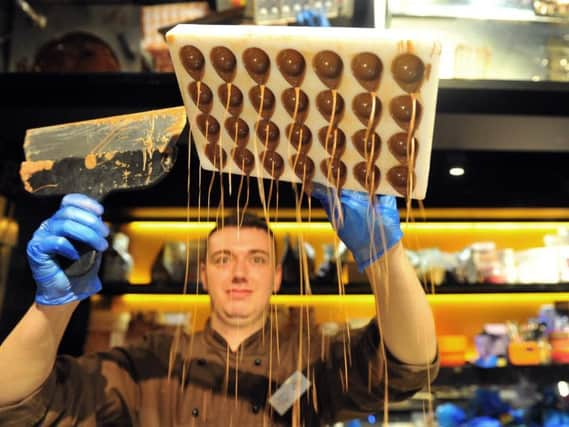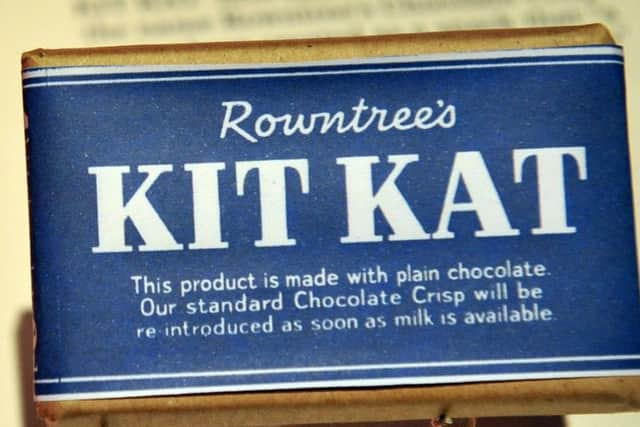All the secrets of KitKat revealed in York exhibition


The KitKat, created in York over 80 years ago, has been recognised as among the world’s most powerful brands, with four million bars still made in the city every single day.
Now, in the first display of its kind, its history is to be celebrated at York’s Chocolate Story. From the origins of its name to its fortuitous popularity in Japan, the exhibition explores its brand, origins and impact.
Advertisement
Hide AdAdvertisement
Hide AdAnd there are unexpected twists to the tale, including the time it turned blue under wartime rations.


“York’s story is built on its chocolate history - at one point over a third of the city’s population worked in the confection industry,” said Ralph Hewitt, helping to coordinate the exhibition at York Chocolate Story. “Now, its products are known all over the globe.
“York is known for its Viking history, its medieval history,” he adds. “People don’t always know of its confectionery history. We can share that story, of its unique heritage.”
Breaking the Mould: The Story of Kitkat, shares the rumour of how its creation came from a factory worker at York’s Rowntree site.
Advertisement
Hide AdAdvertisement
Hide AdLeaving a note in the company suggestion box, he had asked why they did not make something to eat in a “packup”.


The four-finger wafer was launched in London in September 1935, under the name of Rowntree’s Chocolate Crisp, and its popularity, as an affordable treat, grew.
“York was uniquely placed,” said Mr Hewitt. “Factory resources, such as cocoa beans and sugar, would have been brought up from the Humber into the city.
“York had such great transport connections with its railway history, they could be distributed across the country.
Advertisement
Hide AdAdvertisement
Hide Ad“Now, it’s one of the world’s most popular chocolate bars.”
Globally today, 17.6bn Kitkat fingers are produced every year. It’s particularly popular in Japan, where its name loosely translates as ‘good luck’.
The bars are smaller here, and traditionally given as good luck charms. They also feature some unusual flavours - including wasabi, green tea, and baked potato.
And in wartime Britain, Kitkats’ famous red wrapper turned blue.
Advertisement
Hide AdAdvertisement
Hide Ad“The wrapper was changed for a short time in the war due to rationing and food shortages,” said Mr Hewitt. “They altered the recipe, but had worried about maintaining customer loyalty.”
The new exhibition, created by Continuum, tells the story with 21st touches including interactive exhibits, stand out artefacts, video and touch-screen presentations.
“There’s never been a product quite like Kitkat,” adds Bernie Fleck, exhibition coordinator. “This exhibition offers a unique insight into the history of York’s most iconic export.”
The name Kitkat actually originates in the tale of a famous baker and his mutton pie.
Advertisement
Hide AdAdvertisement
Hide AdIn 17th century London, Christopher Catling became known for his baking skills, and the capital’s literary elite would gather in his shop. His name was abbreviated to ‘Kit Cats’ and soon, his fans became known as the Kit Kat club.
From this, that first assortment box of chocolates was named, and later the bar itself.